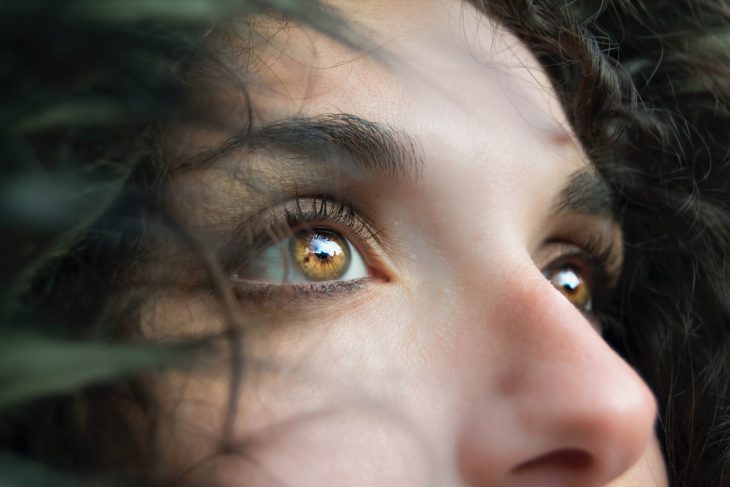Humans blink their eyes 15-20 times per minute – roughly 10,000 times a day! In fact, some researchers are interested in monitoring eye-blinking. For example, humans blink more when they are tired. If we could monitor blinking while a person is driving, they could be alerted when they are too fatigued to drive safely, potentially reducing traffic accidents. Or, a person unable to speak due to injury or disability could potentially communicate by blinking, which could be translated by a computer.
Current methods for monitoring eye blinking have many limitations. One uses a camera to capture eye images but requires high computational power. Poor lighting can also lower image quality. Another relies on a small sensor attached to the skin near the eye. This can become uncomfortable and is not very portable. Yet another method uses infrared rays to monitor eye blinking, but this carries many safety risks.
Researchers in China recently developed a small device integrated into a pair of glasses that could reliably track eye blinking with ultrasound. Ultrasound is a common medical imaging tool that measures high energy sound waves that bounce off of objects of interest. Ultrasound is also not affected by poor lighting and is known to be safe for the eyes.
In order to keep their device small and lightweight, the scientists used technology called microelectromechanical systems, or MEMS for short. MEMS technology combines electrical and mechanical parts into a tiny device, typically smaller than a millimeter. The scientists designed a MEMS device with a top and bottom electrode and a piezoelectric layer sandwiched between. A piezoelectric is a unique material that builds up an electric charge in response to a physical force, including sound waves, making it an excellent material for ultrasound detection. The scientists chose aluminum nitride as the piezoelectric layer because it is non-toxic and is highly sensitive to vibrations.
A single MEMS layered structure like this, called a transducer, is so small that it does not produce a strong signal on its own. In order to amplify it, the scientists connected several transducers in a 15×15 array, resulting in a chip that is only 2.5 mm by 2.5 mm. They then affixed this small chip to a pair of glasses.
The transducer is electrically excited in air and vibrates due to the piezoelectric effect. These vibrations emit an ultrasonic wave. When a person is wearing the glasses, the ultrasonic wave is reflected by their eye or eyelid. This reflected wave generates a signal in the transducer. Using physical laws, the scientists calculated the distance the reflected wave had traveled. Because of the eyelid, it will be a little longer when the eye is open and shorter when closed.
In order to assess their new device, the scientists ran a series of eye-blinking tests. First, they collected data on just one eye open or closed. For an open eye, the reflected wave was measured at 72 microseconds. When the eye was closed, the reflected wave was measured at 51 microseconds. The scientists calculated the change in distance as 3.6 mm, corresponding to the thickness of the person’s eyelid. They then ran tests to confirm they could reliably measure similar changes with both eyes open or both eyes closed as well as one eye open and one eye closed.
The scientists then ran these tests on six people to observe if the device worked for different eye shapes and eyelid thicknesses. They were able to successfully detect whether each person had their eyes open or closed. However the time measured for the reflected wave to return to the device was different for each volunteer due to differences in eyelid and eye shapes. This result shows that the time difference in measurements, not the exact time, is what matters when determining if a person’s eyes are open or closed.
Finally, the scientists wanted to observe their device in real time. They designed a computer algorithm that would record the ultrasound waves measured by the transducer device, calculate the time difference of each reflected wave, and output if the person’s eyes were open or closed. They found that they could successfully monitor a person’s eyes for one minute, and recorded their blinking state in real time.
The scientists in this study designed and fabricated a small device attached to a pair of glasses that would reliably detect and record whether a person’s eyes are open or closed. Not only was the device reliable, but it is portable and safe. The authors propose more long term testing on humans and additional research to optimize the design, such as the circuit size and other features.


